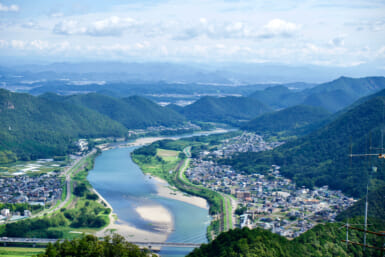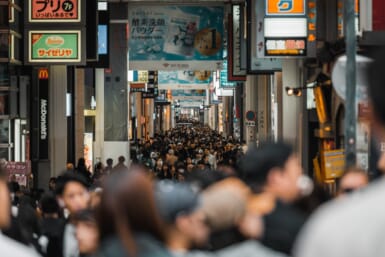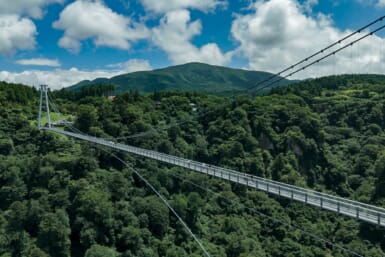Compared to the festive and glittering month of December, January can, at first glance, seem like a less exciting time to visit Japan. However, the month actually has much to offer. From fascinating New Year’s traditions to historic villages transformed by blankets of snow, January has no shortage of natural and cultural wonders to experience. Colder temperatures and the post-holiday season haze also mean enjoying travel at a more relaxed pace. Read on to find out how to start the year off right in Japan.
Japan in January: Travel Overview
- January is generally Japan’s coldest month. In Tokyo, Kyoto and Osaka, the weather averages from 0 to 10 degrees Celsius (32 to 50 degrees Fahrenheit). Snowfall is rare in these three cities, but northern regions of Japan offer breathtaking snowscapes.
- Because January is considered the off-season for tourism in Japan, you can expect fewer crowds and potentially better deals on accommodations.
- The month offers a plethora of cultural experiences, beginning with traditional New Year’s celebrations. You can enjoy the great outdoors exploring Japan’s incredible winter sports scene and gorgeous hot spring towns.
- Expect enormous crowds at famous temples and shrines on New Year’s Eve and Day, as well as at major shopping districts — most stores hold huge sales at the beginning of the year.
- Keep in mind that most attractions and businesses — including banks and some ATMs — close or have limited hours during the first three days of the month (January 1–3).
Popular Activities and Things To Do in January
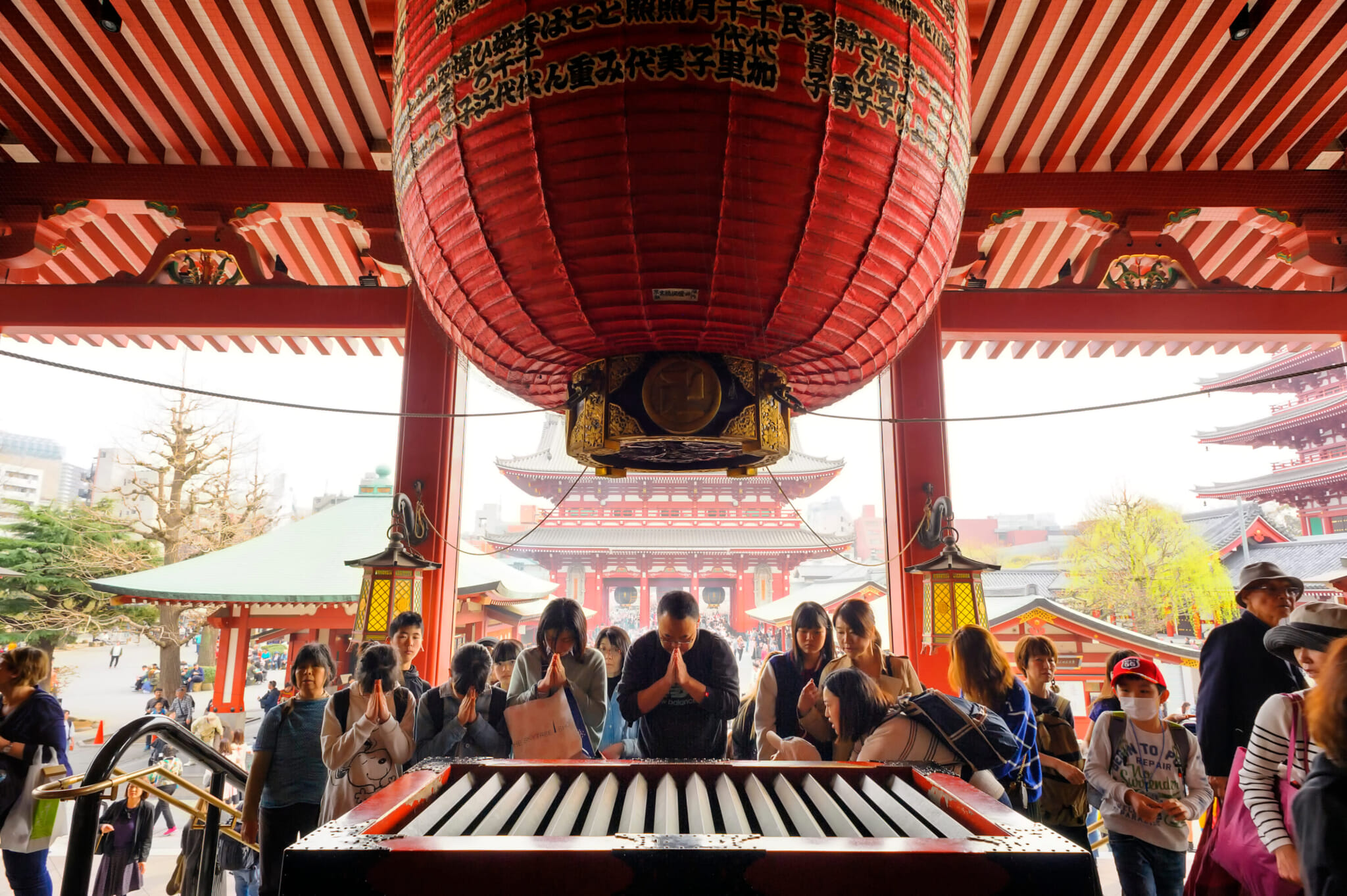
sensoji, asakusa
Visit a Shrine or Temple on New Year’s Day
Hatsumode refers to the Japanese New Year’s tradition of visiting a shrine or temple to pray for good fortune in the upcoming year. Typically, the Japanese participate in hatsumode during one of the first three days of January. Some famous shrines and temples see massive crowds, but many people aim to arrive at the crack of dawn on New Year’s Day regardless, or even on New Year’s Eve before midnight.
If you decide to partake in hatsumode this year, keep in mind the usual etiquette for temple or shrine visits. Bow before passing through the torii or temple gate, cleanse your hands at the temizuya water basin and throw in a coin as you pray. You can also purchase an omamori amulet of your choice, depending on your goals for the year: finding love, landing a promotion, maintaining or attaining good health and more. Write your wishes on ema (wooden plaques), and read an omikuji to discover your fortune for the year.

Try Traditional New Year’s Cuisine
While most Westerners spend New Year’s Day taking it easy after celebrating with friends the night before, the Japanese start the new year with quality family time. Most return to their hometown and gather with loved ones to eat osechi — traditional food now associated with the New Year’s holiday. Osechi dates back to the Heian period, when special dishes were offered to various deities and eaten by members of courtly society on important days that marked new seasons. Originally quite simple — consisting of vegetables boiled in soy sauce and vinegar — osechi evolved into an elaborate collection of dishes over the centuries.
Each dish has associated meanings related to its characteristics. For instance, kuromame (black beans) symbolize health, kazunoko (herring roe) symbolizes fertility and tai (sea bream) symbolizes joy and happiness. Some families prepare osechi themselves, while others order in advance from department stores or convenience stores. Although premade osechi assortments can be pricey, with sets for two starting at an average of around ¥10,000, you can find prepackaged components at supermarkets — the perfect solution if you want to dabble in osechi without committing to a full spread.

ginzan onsen, yamagata prefecture
Stay in an Onsen Town
The best way to relax after the busy holiday season is to visit one of Japan’s stunning onsen towns, where you’ll find plenty of natural hot springs to sink into for a relaxing soak. Famous towns boasting abundant baths include Ginzan Onsen in Yamagata, Hakone Onsen in Kanagawa and Kinosaki Onsen in Hyogo. For other heavenly hot springs to visit, check out Japan’s Best Onsen Towns and Alternative Onsen Towns. No matter which onsen town you visit, you can look forward to mineral-rich waters known for their therapeutic properties, scenic surroundings and delicious traditional cuisine.
Some onsen towns also feature festivals in January, including Nagano Prefecture’s Nozawa Onsen, which celebrates its Fire Festival on January 15, and Tochigi Prefecture’s Yunishigawa Onsen, whose Kamakura Festival is held from late January to early March.

zao onsen ski resort, yamagata prefecture
Enjoy Winter Sports
Japan’s winter sports scene sees some of its finest snow in January, and many locals and visitors head to the mountains to hit the slopes. Whether you’re a beginner, an expert or just looking to admire Japan’s powder snow — known as “Japow” to aficionados — there’s no shortage of options to choose from. Even better, Japan’s ski resorts often have much more going for them than just powdery pistes, with hot springs, winter festivals and tasty local cuisine upping the enjoyment factor.
For example, Hakuba and Nozawa Onsen (Nagano), Myoko Kogen (Niigata), Zao Onsen (Yamagata) and Niseko (Hokkaido) are celebrated for both their snow and steaming springs. These same ski resorts are known for delicious local dishes, including Shinshu beef and soba (Hakuba and Nozawa Onsen), Echigo beef and noppe stew (Myoko Kogen), jingisukan (Zao Onsen) and fresh seafood and soup curry (Niseko).
Check out our list of Japan’s best ski resorts, and consider reserving rental equipment in advance, as January falls within peak season.
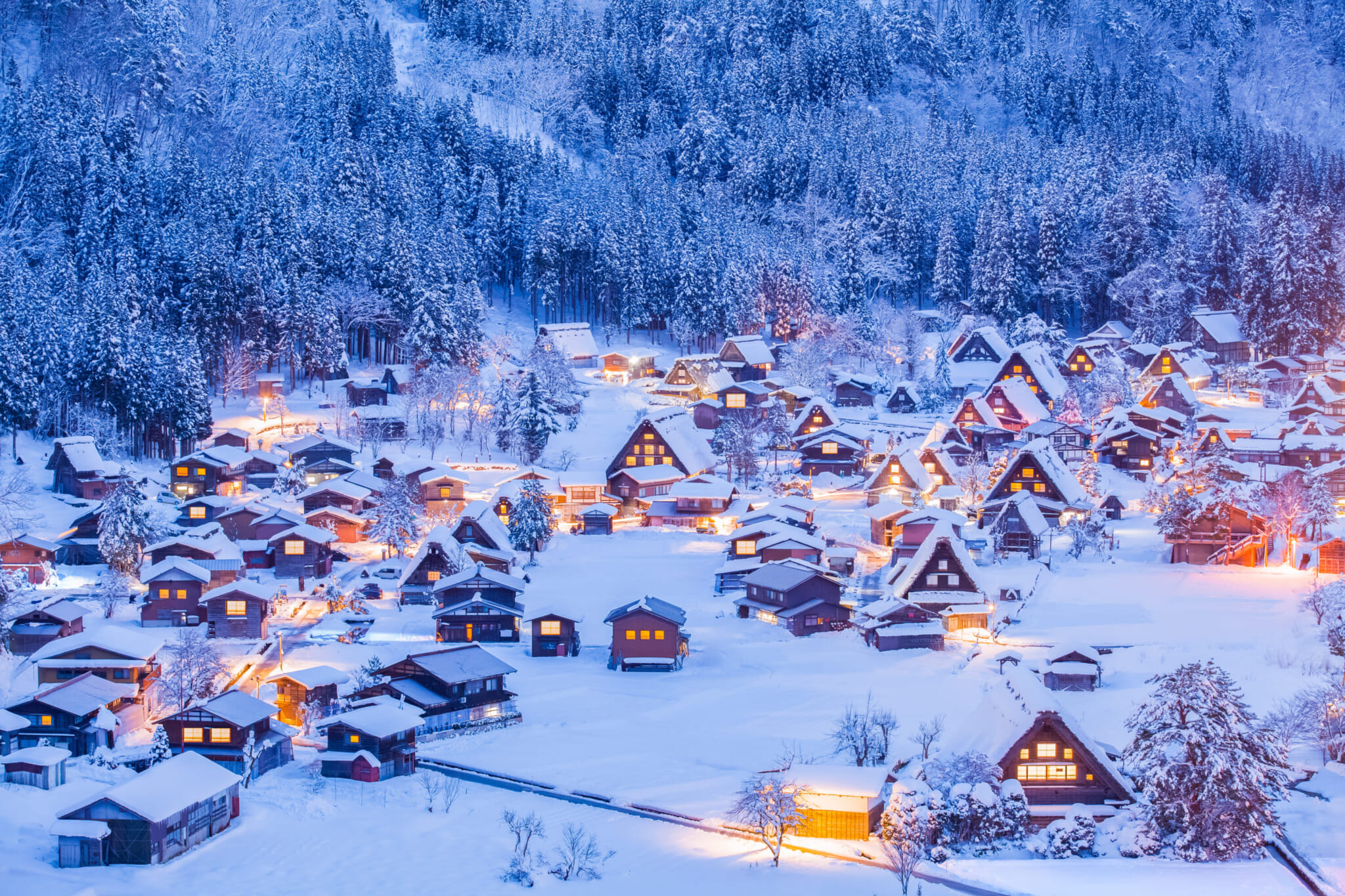
shirakawa-go, gifu prefecture
Admire Snow-Covered Villages
Beyond exciting winter sports, Japan’s colder months offer the perfect opportunity to travel to magical snow-swathed villages. The most famous example is Shirakawa-go in Gifu Prefecture, designated a UNESCO World Heritage Site in 1995. Ogimachi, the main attraction and largest village of Shirakawa-go, features thatched-roof farmhouses, winter illuminations and local crafts such as silkworm cultivation.
Other picturesque options include the Edo-period post town of Ouchi-juku in Fukushima Prefecture, where thatched-roof homes line the main street, and the Higashi-Chaya District and nearby Nagamachi Buke Yashiki District in Kanazawa, Ishikawa Prefecture, known for their teahouses and samurai homes, respectively. While you can visit these spots year-round, snow adds a romantic, fairy-tale atmosphere that transforms them into magical escapes from the everyday.

Watch a Sumo Tournament
Also known as Hatsu Basho, the January Grand Sumo Tournament kicks off Japan’s yearly six-tournament sumo season. Held at Tokyo’s Ryogoku Kokugikan, the event generally opens on the second Sunday of the month and lasts 15 days. Sumo wrestling is Japan’s most iconic sport and also one of its oldest, originating some 1,500 years ago as a religious ritual performed at Shinto shrines. Even for novices, catching a match of the traditional sport is sure to be a memorable and culturally significant experience. You can check each year’s tournament schedule and ticket information here. For info on seasons, seating and ticketing — and even advice on how to enjoy the sport — check out our guide to sumo in Tokyo.
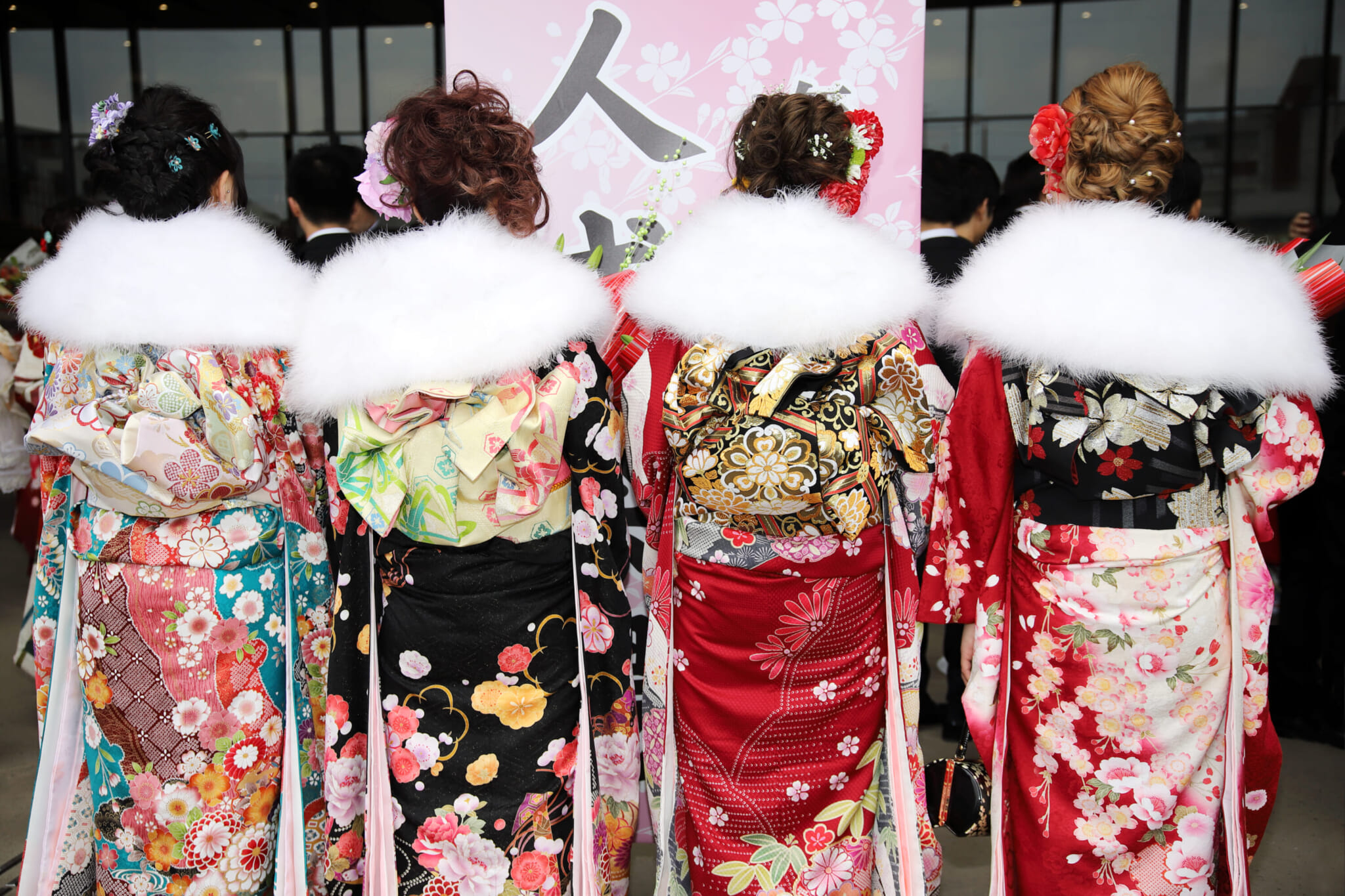
Bonus: Enter Your 20s in Style
Regardless of where you are in Japan on the second Monday of January, you’ll likely come across at least a few young adults — aged 20 or soon to be 20 — dressed to the nines, with women in furisode (long-sleeved kimono) and faux fur stoles and men in montsuki haori hakama or Western-style suits.
These young people are celebrating what was, until early 2022, considered their coming of age, at ceremonies hosted by their home communities. Though the age of majority dropped to 18 in April 2022, many municipalities have chosen to rename their ceremonies and continue recognizing their 20-year-olds by holding celebratory events, many of which are held on or around that second Monday of January — which is still called Seijin no Hi (Coming of Age Day). These ceremonies are typically held at municipal offices, like city halls, or at shrines. In Tokyo, the ceremonies at the Shinjuku and Shibuya ward offices are some of the country’s biggest.
If you’re a resident, keep in mind that your birthday must fall between the last and coming April to receive a formal invitation. If you’re a visitor who happens to be entering your 20s, you can still enjoy the festive atmosphere, reserve a kimono photo shoot as a special souvenir or have a fun day out with friends wearing kimono.
Top Destinations To Visit in January

courtesy of restaurant kamakura village
Kamakura Snow Hut Village, Nagano Prefecture
Restaurant Kamakura Village, located in the small alpine city of Iiyama, consists of 20 pop-up kamakura (snow huts) that serve delicious nabe meals. Open annually between late January and late February, the restaurant serves Noroshi nabe, a local hot pot made with a Shinshu miso base, locally grown vegetables and Iiyama’s famous Miyuki pork. Each kamakura can fit up to four people, and reservations are required. Right next to the kamakura, you’ll spot the bright red torii gate of Kamakura Shrine.

Niseko, Hokkaido Prefecture
Niseko is well trodden by locals and tourists for a reason; blanketed in an abundance of perfect powder, it’s home to Japan’s most famous ski resorts. The Niseko United All Mountain Pass provides access to the area’s four major resorts: Grand Hirafu, Niseko Village, Annupuri and Hanazono. The resorts are connected by shuttle buses. Grand Hirafu, in particular, is foreigner-friendly and is the only one of the four next to a lively town area — Hirafu village.
In addition to skiing and snowboarding, Niseko offers an impressive array of activities and accommodations, like hot springs, an energetic nightlife scene, high-end hotels and even helicopter tours of the stunning backcountry and Mount Yotei. If you’re looking for alternative ski resort options, check out our recommendations.

Misotsuchi Icicles, Saitama Prefecture
Misotsuchi Icicles, Saitama Prefecture
Accessible by train from Tokyo, Chichibu has long been a go-to getaway for Tokyo’s residents. The Misotsuchi Icicles — the stunning result of spring water seeping from rocks along the Arakawa River and freezing — are a particularly popular attraction in the area. Emerging in January and February, the icicles, which grow to a height of 8 meters some years, are treasured for their ethereal beauty. After dark, they’re lit up in a mystical blue glow, adding even more magic to the icescape. Once you’ve had your fill of frosty temperatures, head over to nearby Otaki Onsen, an excellent spot to warm up.
The Misotsuchi Icicles aren’t the only gelid spectacle to enjoy in Chichibu; the region is also home to the Icicles of Onouchi and the Icicles of Ashigakubo. In addition to being beautiful and relatively close to Tokyo, all three icicle displays are affordable, with admission fees ranging from ¥300 to ¥500.

Ginzan Onsen, Yamagata Prefecture
Ginzan Onsen is one of Japan’s most famous onsen towns and a must-visit for anyone who wants to immerse themselves in a traditional hot spring experience. Endlessly Instagrammable, the town is bisected by the Ginzan River, along which ryokan rise on both sides. After dark, retro gaslight lamps bathe the town in a soft, warm glow, conjuring a scene both nostalgic and cinematic.
If Ginzan Onsen looks familiar, it’s likely because the bathhouse in Studio Ghibli’s Spirited Away bears a striking resemblance to a Ginzan Onsen ryokan. The town was also a location for the classic NHK drama series Oshin, which ran from April 1983 to March 1984. While in town, don’t forget to savor local specialties like Obanazawa wagyu and Obanazawa soba.
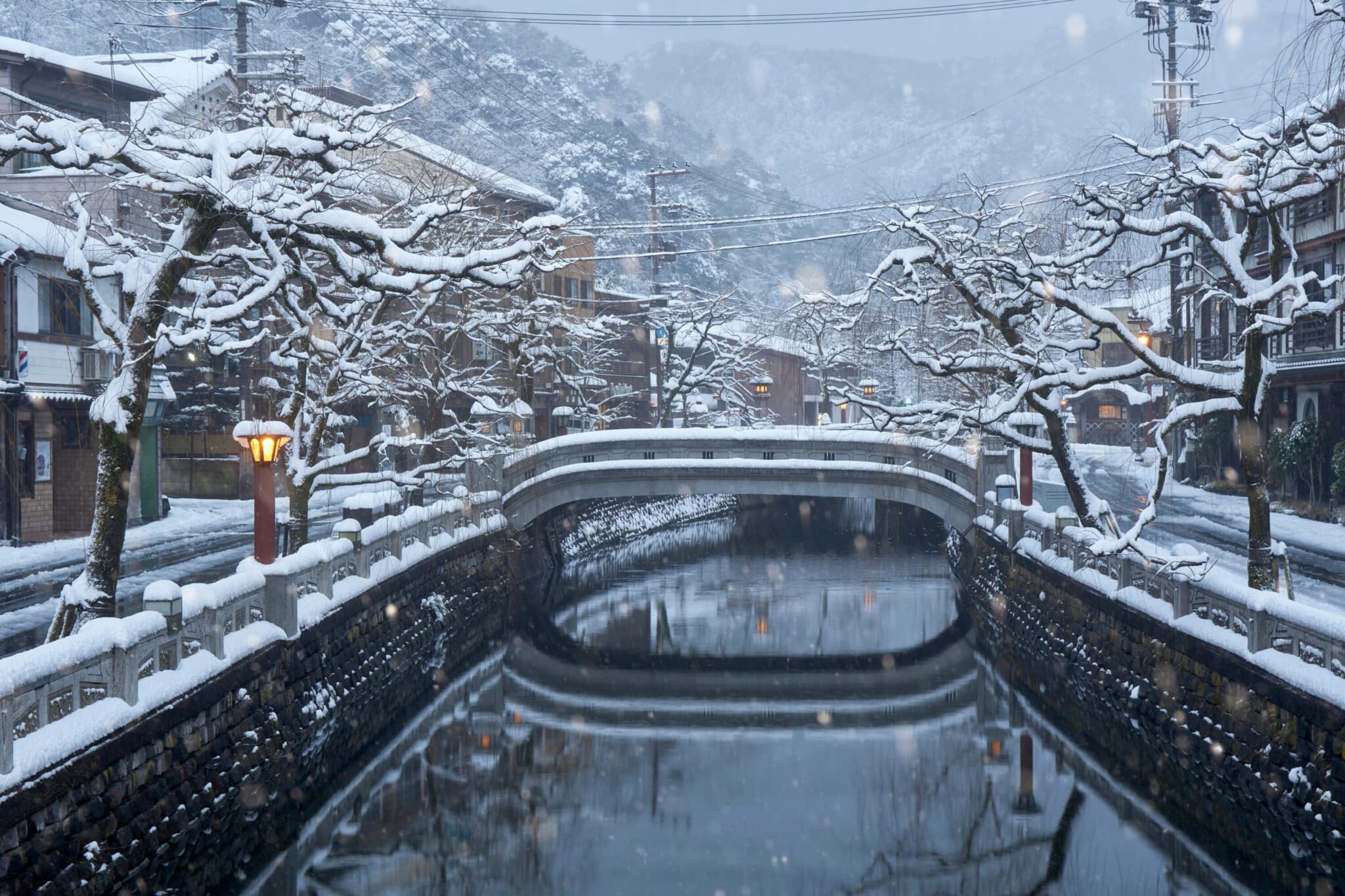
Kinosaki Onsen, Hyogo Prefecture
Easily accessible from Kyoto, Osaka, Kobe and Himeji, Kinosaki Onsen is one of Kansai’s most picturesque hot spring towns. It’s known for its seven mystical hot springs, which all happen to be tattoo-friendly. Each of the seven bathhouses has a distinct atmosphere and character, and you can freely “onsen hop” between them by purchasing a pass. Bathhouses — and ryokan — are found on either side of the town’s main canal, which also boasts beautiful traditional bridges. Kinosaki Onsen is especially breathtaking in the snow, making it a perfect destination for January.
Day-trippers can purchase day passes at any of the bathhouses. Those staying the night at a local ryokan or hotel will likely be given a free pass to all seven hot springs.

Kenroku-en, Ishikawa Prefecture
Kenroku-en, in Ishikawa’s capital city of Kanazawa, is one of the Three Great Gardens of Japan. In a rare feat, it features all six characteristics of an ideal garden as described in a classic Chinese book on the subject: spaciousness, seclusion, artifice, antiquity, water and sweeping views. The garden’s name, which translates to “garden of the six sublimities,” even boasts of the accomplishment. Originally established as the outer garden of Kanazawa Castle, the garden took the ruling Maeda family nearly two centuries to complete. The grounds feature quaint bridges, teahouses and seasonal flora and fauna; in the wintertime, a soft blanket of white snow carpets the landscape, transforming it into a tranquil wonderland. You can get to Kenroku-en easily by bus from Kanazawa Station.
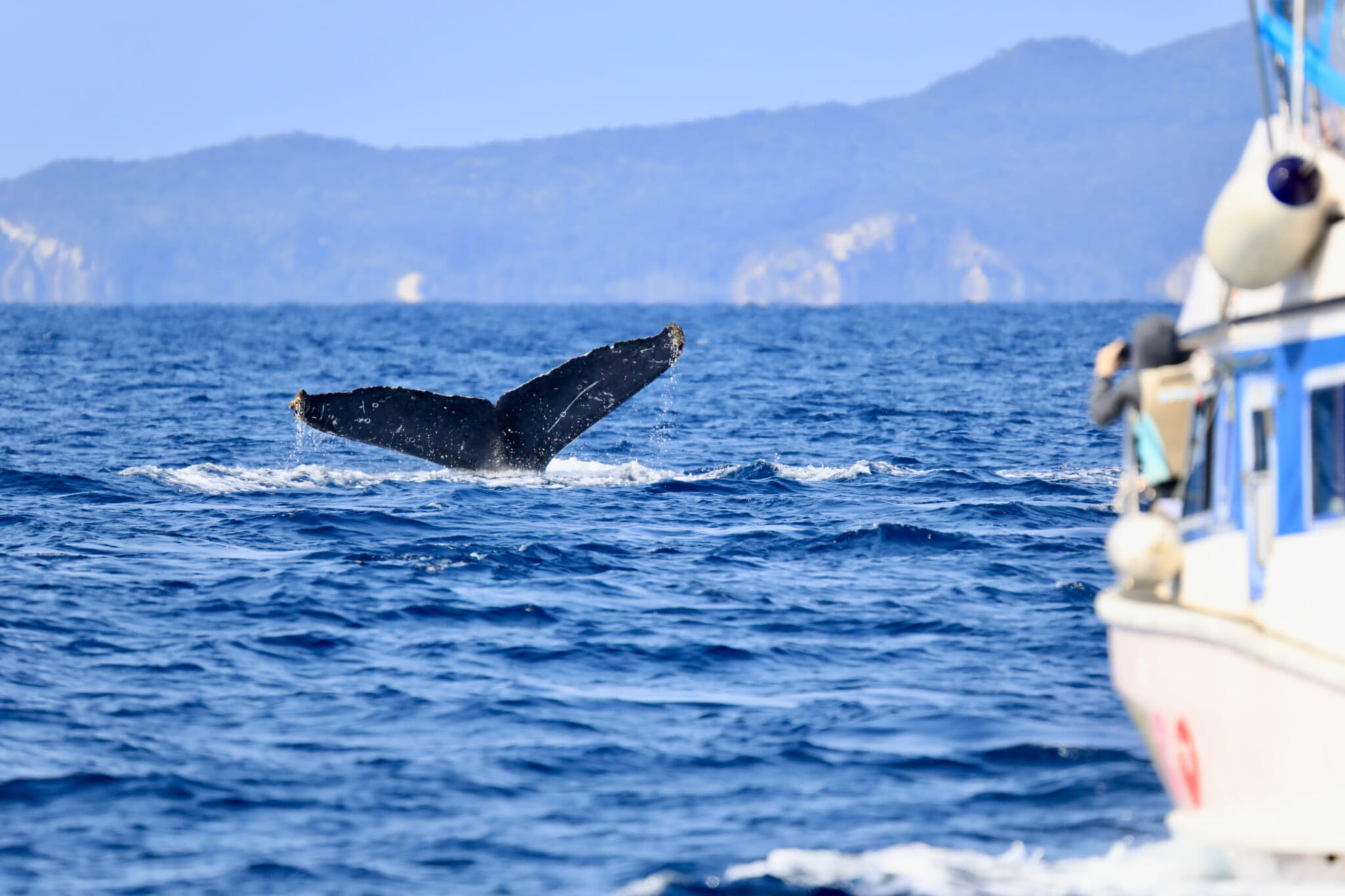
Okinawa Prefecture
If you’re not a fan of the cold, January is a great time to head to the subtropical shores of Okinawa, where temperatures usually remain at around 17 degrees Celsius. As winter is considered the off-season in Okinawa, you’ll be met with fewer crowds at beaches and resorts. January in Okinawa also boasts early cherry blossoms, exciting marine sports and a high chance of seeing humpback whales on whale-watching tours. The whales, which migrate from Alaska and Russia to the warm waters of Okinawa in January, draw many admirers to Zamami Island to witness their majestic beauty.
Not all beaches in Okinawa are open year-round, so do your research before heading out. You may also need a wetsuit to comfortably swim or participate in water sports, as water temperatures dip to around 22 degrees Celsius in January.
Travel Tips and Recommendations
Book in Advance
The New Year’s period is Japan’s most important holiday, with many locals traveling to see family. There will be significant competition for air and rail tickets and accommodation. As a result, you’ll want to figure out your transportation and lodging as soon as possible. Avoid the non-reserved cars on shinkansen during the year-end/New Year period whenever you can, as they’ll likely be packed.
Pack for the Cold
January sees some of Japan’s coldest and driest weather. Prepare layers, warm winter accessories and activity-appropriate footwear, especially if you’re heading to a snowy region like Hokkaido.
Keep Closures in Mind
Almost everything closes early on New Year’s Eve and remains shut on New Year’s Day. Try to come up with a plan for meals and activities in advance. Most locals spend the day at home with family, so it might be best to take it easy and relax on the first day of the year.
Take Advantage of Sales
Many shops hold New Year’s sales, with great deals on various items. If you’ve got specific items you’re hoping to buy while in Japan, whether clothing, electronics or something else, now’s your chance to get them at an excellent price. Plenty of stores also sell fukubukuro (“lucky bags”) — mystery bags filled with a variety of goods at a discounted price.



